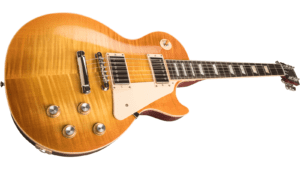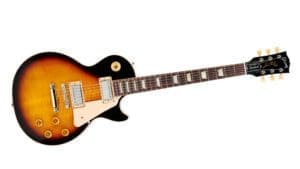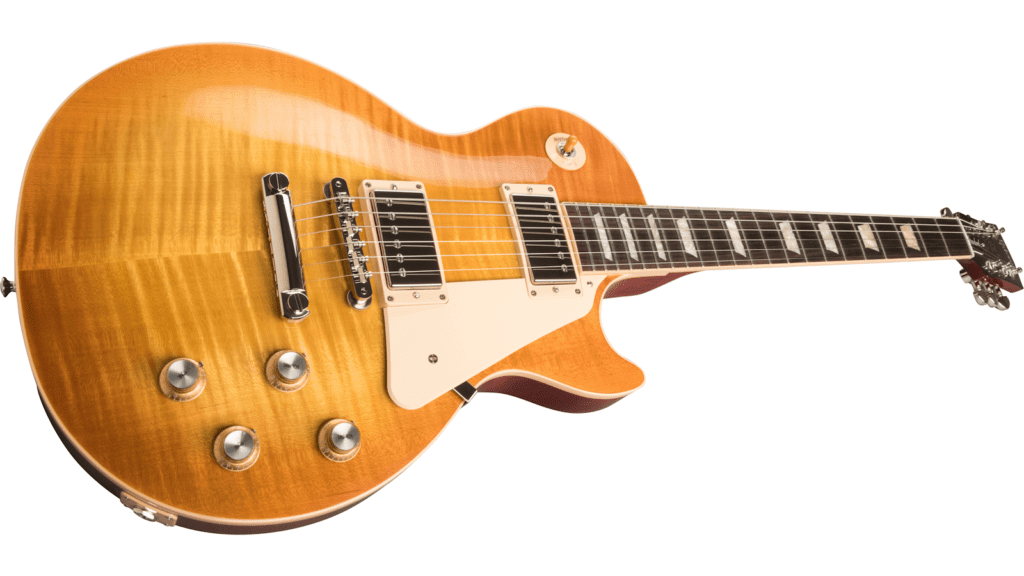Gibson Les Paul Standard 50s vs 60s comparison. The Gibson Les Paul Standard is an iconic electric guitar model synonymous with rock and roll music. It is one of Gibson’s flagship models and has been a favorite among professional guitarists and enthusiasts since its introduction in the 1950s.
The Les Paul Standard is revered for its exceptional craftsmanship, rich tone, and timeless design.
Gibson Les Paul Standard Body
The body of the Gibson Les Paul Standard is typically made of a single piece of mahogany or a mahogany back with a maple top. This combination of tonewoods contributes to the guitar’s distinct sound and resonance.
The Body


The body is carved with a single-cutaway design, providing easy access to the upper frets and a comfortable playing experience.
The Neck
One of the defining features of the Les Paul Standard is its set-neck construction. The guitar’s neck is securely glued to the body, enhancing sustain and resonance while improving overall stability.
The neck is traditionally mahogany and topped with a rosewood or ebony fingerboard. The neck profile can vary, but it often falls into the category of a medium to slim C-shape, providing a comfortable grip for players of various hand sizes.
Scale Length


The Les Paul Standard typically features a 24.75-inch scale length, contributing to its distinctive tone and playability. The frets are often medium jumbo or vintage-style, balancing comfortable playability and fretting accuracy.
Electronics
Regarding electronics, the Les Paul Standard is equipped with a pair of humbucking pickups. These pickups are known for their high output and warm, fat tone.
The most common pickup configuration includes a ’57 Classic in the neck position and a ’57 Classic Plus or Burstbucker in the bridge position. This combination allows players to achieve many tonal options, from smooth and creamy sounds to powerful and biting tones.
Controls


Both guitars deliver the legendary Les Paul experience with their distinct flavors. The Les Paul Standard is simple and intuitive. It typically includes two volume, two tone knobs, and a three-way pickup selector switch. This setup provides easy access to various tones and lets players fine-tune their sound on the fly.
Hardware
The hardware on the Les Paul Standard is built to withstand the demands of professional use. It usually includes a tune-o-matic bridge and stop bar tailpiece, which provides excellent intonation and sustain.
The standard models feature high-quality Grover or Gibson Deluxe tuning machines, ensuring stable and precise tuning.
Aesthetics


Aesthetically, the Les Paul Standard exudes a timeless and elegant look. It is available in various stunning finishes, such as Heritage Cherry Sunburst, Honey Burst, Bourbon Burst, and more.
The guitar often features binding on the body and neck, giving it a refined and luxurious appearance. The iconic trapezoid inlays on the fingerboard, and the mother-of-pearl Gibson logo on the headstock add to its classic charm.
Over the years, the Les Paul Standard has undergone some variations and updates, but it has always stayed true to its heritage. It remains a sought-after instrument for players across different genres, including rock, blues, jazz, and beyond.
Whether you’re a beginner or an advanced player, the Gibson Les Paul Standard is a timeless instrument with exceptional tone, playability, and craftsmanship.
When comparing the Les Paul Standard 50s and 60s models, several vital differences differentiate them in terms of construction, tonal characteristics, and visual aesthetics.
Let’s dive into a comprehensive description of these variations.
Construction
Neck Profile


The Les Paul Standard 50s typically features a thicker “Chunky C” neck profile, replicating the feel of vintage Les Pauls from the 1950s.
On the other hand, the Les Paul Standard 60s usually has a slimmer “Slim Taper” neck profile, offering a faster and more modern playing experience.
Fingerboard
The Les Paul Standard 50s often incorporates a Rosewood fingerboard, known for its warm tones and smooth feel.
Meanwhile, the Les Paul Standard 60s may employ a Rosewood or a more contemporary-looking, lighter-colored Indian Laurel fingerboard.
Pickups
Humbuckers
Both models come with Gibson’s renowned Burstbucker pickups but have different variations.
The Les Paul Standard 50s employs Burstbucker 1 and Burstbucker 2 pickups, designed to replicate the PAF (Patent Applied For) humbuckers of the ’50s.
The Les Paul Standard 60s utilizes Burstbucker 61R and Burstbucker 61T pickups, offering a slightly hotter and more modern voicing.
Electronics
Wiring
The Les Paul Standard 50s typically follows the traditional ’50s wiring scheme, resulting in a smoother roll-off of treble when the volume is lowered.
In contrast, the Les Paul Standard 60s often incorporates modern wiring, allowing for a more consistent tone throughout the volume sweep.
Capacitors
The Les Paul Standard 50s usually incorporates Bumblebee capacitors, which were used in vintage Les Pauls and contribute to their distinctive tonal characteristics.
The Les Paul Standard 60s may include Orange Drop capacitors, which provide a slightly different tonal response.
Finishes


The Les Paul Standard 50s offers a range of classic finishes, such as Heritage Cherry Sunburst, Tobacco Burst, and Gold Top.
The Les Paul Standard 60s also presents a variety of finishes, including Bourbon Burst, Iced Tea, and Unburst, to name a few.
These finishes often exhibit a more vibrant and contemporary appearance compared to the ’50s finishes.
Visual Features
The Les Paul Standard 50s embraces vintage-style appointments, such as historically accurate binding, vintage-style keystone tuners, and amber top hat knobs.
The Les Paul Standard 60s incorporates modern enhancements like a slim taper neck, modern-style tuners, and top hat knobs with silver inserts.
It’s important to note that while the differences mentioned above are typical for each model, individual guitars within the same series can still have variations due to the nature of manufacturing processes and customizations.
Summary
Ultimately, the choice between the Les Paul Standard 50s and 60s depends on personal preference for neck feel, tonal characteristics, and visual aesthetics. Both guitars deliver the legendary Les Paul experience with their distinct flavors.



